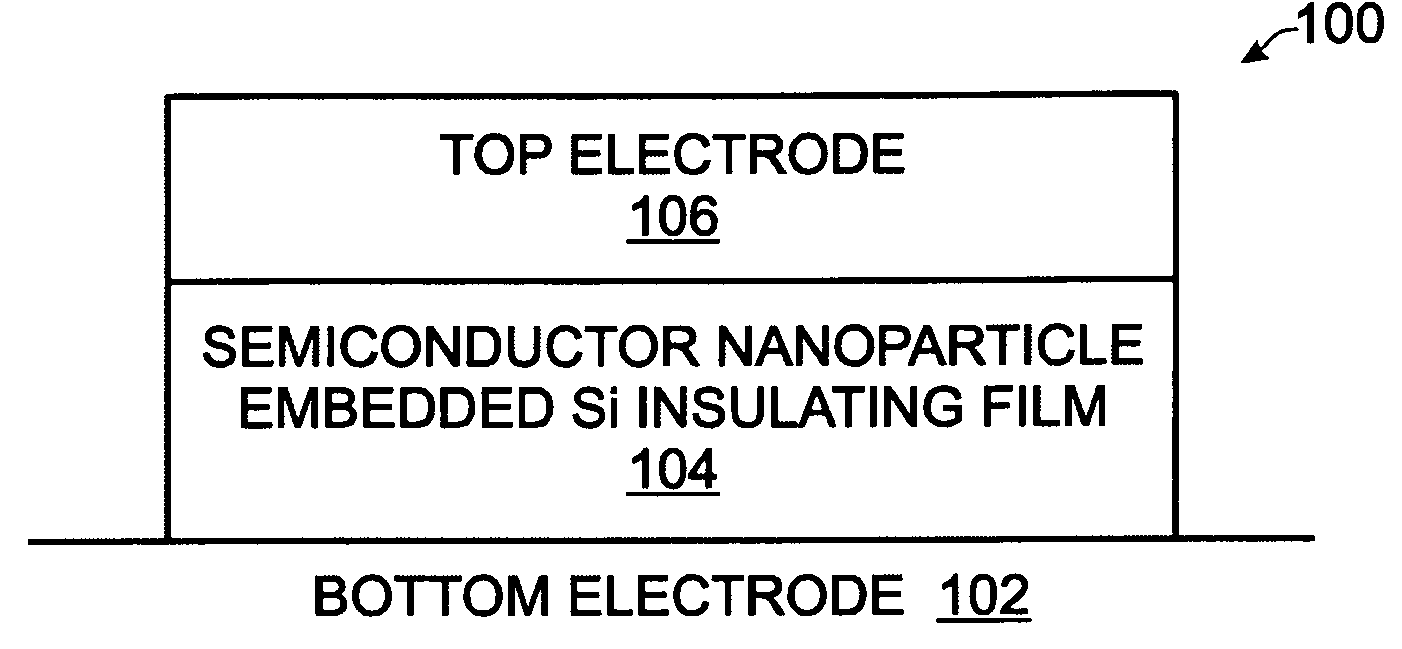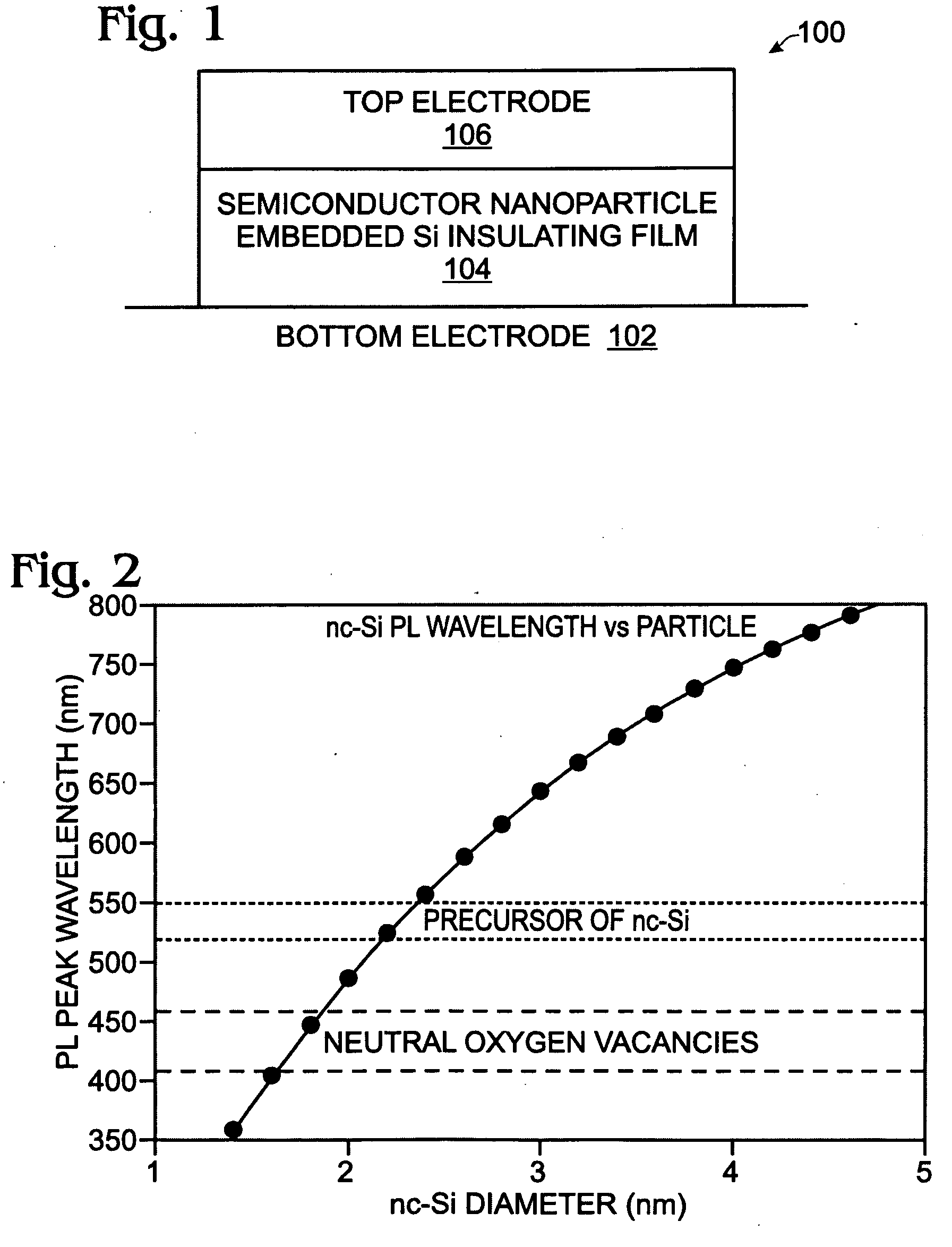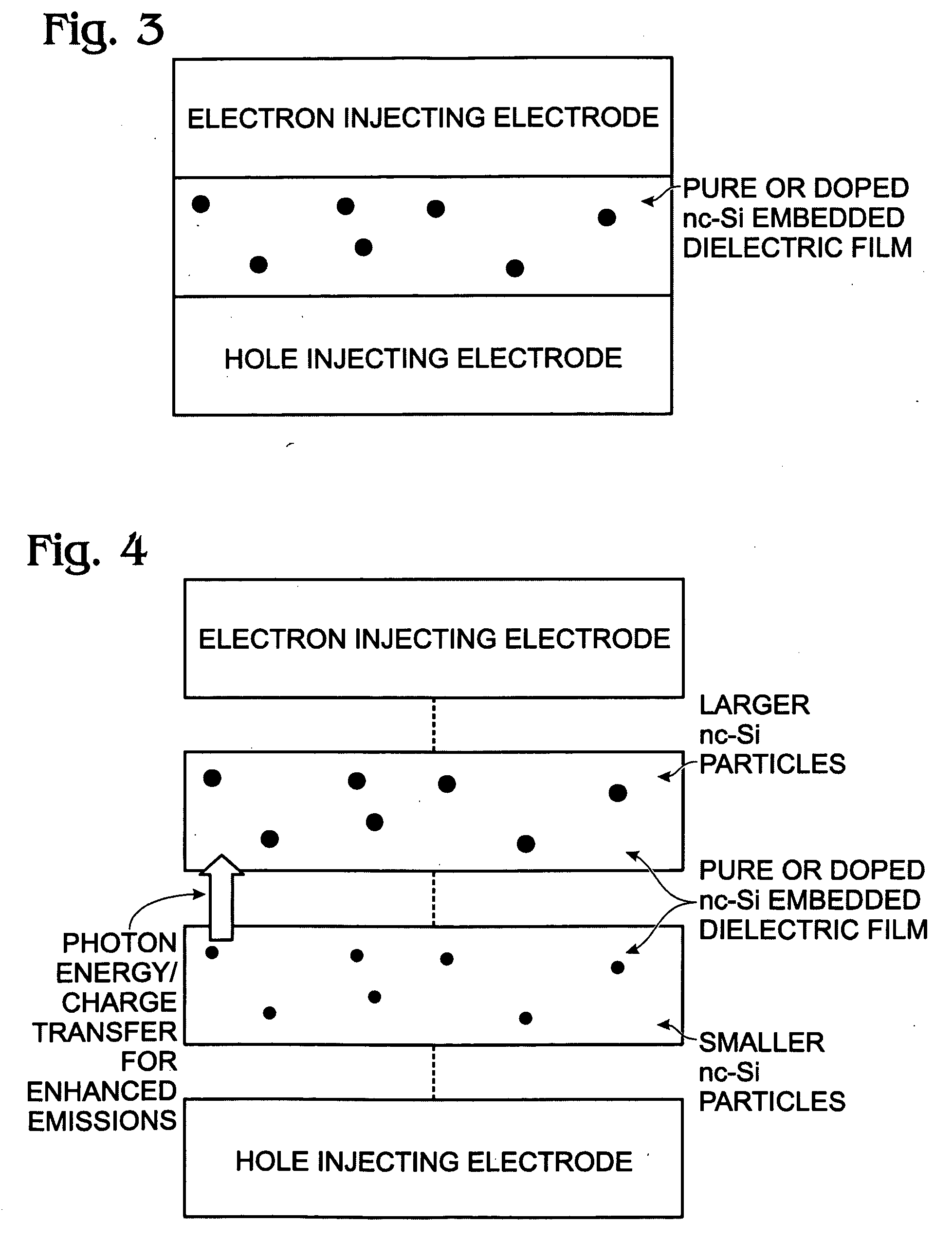Fabrication of a Semiconductor Nanoparticle Embedded Insulating Film Electroluminescence Device
- Summary
- Abstract
- Description
- Claims
- Application Information
AI Technical Summary
Benefits of technology
Problems solved by technology
Method used
Image
Examples
Embodiment Construction
[0045]FIG. 1 is a partial cross-sectional view of an electroluminescence (EL) device with a semiconductor nanoparticle embedded Si insulating film. The EL device 100 comprises a bottom electrode 102. The bottom electrode 102 may be a doped semiconductor, metal, or polymer. A semiconductor nanoparticle embedded Si insulating film 104 overlies the bottom electrode 102. The semiconductor nanoparticle embedded Si insulating film 104 includes either the element of N or C, and has an extinction coefficient (k) in a range of 0.01-1.0, as measured at about 632 nanometers (nm). Simultaneously, the semiconductor nanoparticle embedded Si insulating film 104 has a current density (J) of greater than 1 Ampere per square centimeter (A / cm2) at an applied electric field lower than 3 MV / cm.
[0046]The semiconductor nanoparticles embedded in the Si insulating film 104 have a diameter in the range of about 1 to 10 nanometers (nm), and are made from either Si or Ge. A top electrode 106 overlies the semic...
PUM
| Property | Measurement | Unit |
|---|---|---|
| Temperature | aaaaa | aaaaa |
| Temperature | aaaaa | aaaaa |
| Pressure | aaaaa | aaaaa |
Abstract
Description
Claims
Application Information
 Login to View More
Login to View More - R&D
- Intellectual Property
- Life Sciences
- Materials
- Tech Scout
- Unparalleled Data Quality
- Higher Quality Content
- 60% Fewer Hallucinations
Browse by: Latest US Patents, China's latest patents, Technical Efficacy Thesaurus, Application Domain, Technology Topic, Popular Technical Reports.
© 2025 PatSnap. All rights reserved.Legal|Privacy policy|Modern Slavery Act Transparency Statement|Sitemap|About US| Contact US: help@patsnap.com



